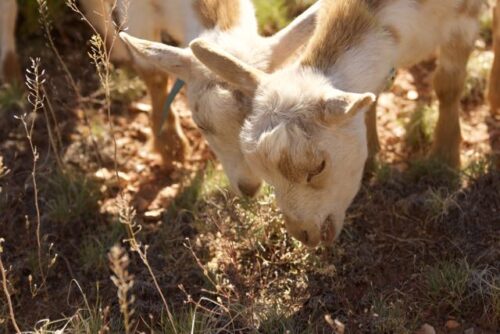Hi, Phoenix here. I hope you enjoyed K’s blog series on photovoltaic systems–I know I learned a lot. Now I want to start a series on dairy farming–what it is, why I wanted to start a small-scale dairy farm, and what K and I have made with that oh-so-sweet milk. But first…
What is dairy farming?
Dairy farming is a type of farming that focuses on milk production. Originally, it was part of a small crop-producing farm. Around the 20th century, it became separate as dairy farming was industrialized, with systems for automatic milking and standardized practices for pasteurizing milk.
Why do we care?
While large-scale dairy farming has allowed for a substantial increase in milk production (necessary for making lots of cheese), it has also harmed the environment in several ways including: methane production, degradation of pasture land, buildup of manure, and in many cases, a decrease in the animals’ quality of life.
What does this mean for me?
I really like drinking milk and eating ice-cream, and have a slight obsession with cream cheese. I also couldn’t imagine life without butter. All that takes a lot of milk. Before I started homesteading, that milk probably came from a large-scale dairy farm far away from me with hundreds of cows crowded together and heavily polluting the environment. The milk also had to be ultra-high temperature (UHT) pasteurized because of regulations. To get the milk here, I had to rely on a fragile distribution system we’ve seen disrupted recently by the pandemic, political conflicts, high gas prices, and aging infrastructure.
Moving to a small-scale dairy farm allowed me to get local, fresh, more-sustainably produced milk from happier animals for my ice-cream, cheese, and butter making needs. I’ve also been able to make goat milk shampoo and soap, which I knew were better for me but honestly couldn’t afford to buy.
There are many animals used for dairy farming including: cows, goats, sheep, buffalo, and camels. I wanted goats for several reasons. For one thing, they’re cute (and a lot smarter than we give them credit for). They don’t mind being milked, unlike sheep. They take up less space than a cow, buffalo, or camel would. They’re also able to graze more effectively, allowing us to keep feed costs down. The land my homestead is on used to be cow pasture and was cleared and managed for that purpose, so we have some vegetation for the goats to eat. Goat milk is also lower in lactose so it’s easier to digest for us humans. More on that in the next post–stay tuned!
Next blog post: Dairy Farming–Goat milk vs cow milk (by Phoenix)

